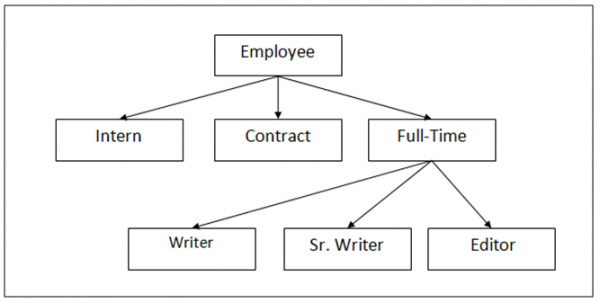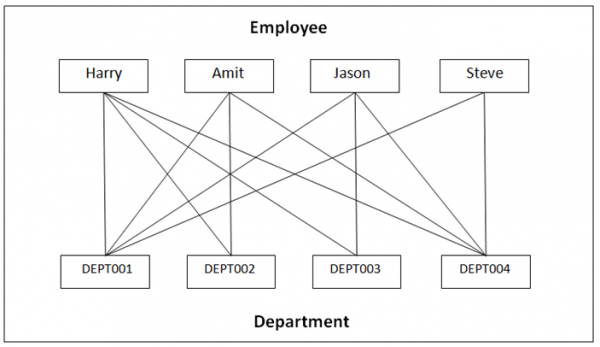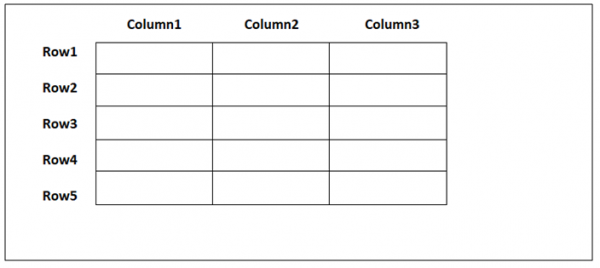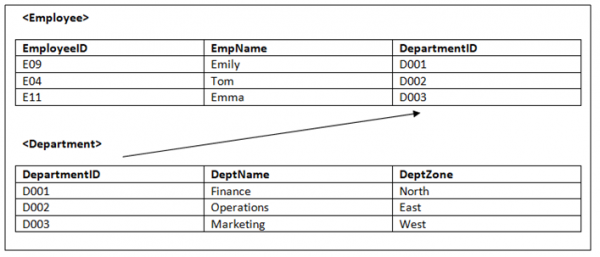
 Data Structure
Data Structure Networking
Networking RDBMS
RDBMS Operating System
Operating System Java
Java MS Excel
MS Excel iOS
iOS HTML
HTML CSS
CSS Android
Android Python
Python C Programming
C Programming C++
C++ C#
C# MongoDB
MongoDB MySQL
MySQL Javascript
Javascript PHP
PHP
- Selected Reading
- UPSC IAS Exams Notes
- Developer's Best Practices
- Questions and Answers
- Effective Resume Writing
- HR Interview Questions
- Computer Glossary
- Who is Who
Evolution of Data Models
Managing data was the key and was essential. Therefore, data model originated to solve the file system issues. Here are the Data Models in DBMS −
Hierarchical Model
In Hierarchical Model, a hierarchical relation is formed by collection of relations and forms a tree-like structure.
The relationship can be defined in the form of parent child type.
One of the first and most popular Hierarchical Model is Information Management System (IMS), developed by IBM.
Example
The hierarchy shows an Employee can be an Intern, on Contract or Full- Time. Sub-levels show that Full-Time Employee can be hired as a Writer, Senior Writer or Editor:

Advantages
- The design of the hierarchical model is simple.
- Provides Data Integrity since it is based on parent/ child relationship
- Data sharing is feasible since the data is stored in a single database.
- Even for large volumes of data, this model works perfectly.
Disadvantages
- Implementation is complex.
- This model has to deal with anomalies like Insert, Update and Delete.
- Maintenance is difficult since changes done in the database may want you to do changes in the entire database structure.
Network Model
The Hierarchical Model creates hierarchical tree with parent/ child relationship, whereas the Network Model has graph and links.
The relationship can be defined in the form of links and it handles many-to-many relations. This itself states that a record can have more than one parent.
Example

Advantages
- Easy to design the Network Model
- The model can handle one-one, one-to-many, many-to-many relationships.
- It isolates the program from other details.
- Based on standards and conventions.
Disadvantages
- Pointers bring complexity since the records are based on pointers and graphs.
- Changes in the database isn’t easy that makes it hard to achieve structural independence.
Relational Model
A relational model groups data into one or more tables. These tables are related to each other using common records.
The data is represented in the form of rows and columns i.e. tables:

Example
Let us see an example of two relations <Employee> and <Department> linked to each other, with DepartmentID, which is Foreign Key of <Employee> table and Primary key of <Department> table.

Advantages
- The Relational Model does not have any issues that we saw in the previous two models i.e. update, insert and delete anomalies have nothing to do in this model.
- Changes in the database do not require you to affect the complete database.
- Implementation of a Relational Model is easy.
- To maintain a Relational Model is not a tiresome task.
Disadvantages
- Database inefficiencies hide and arise when the model has large volumes of data.
- The overheads of using relational data model come with the cost of using powerful hardware and devices.

